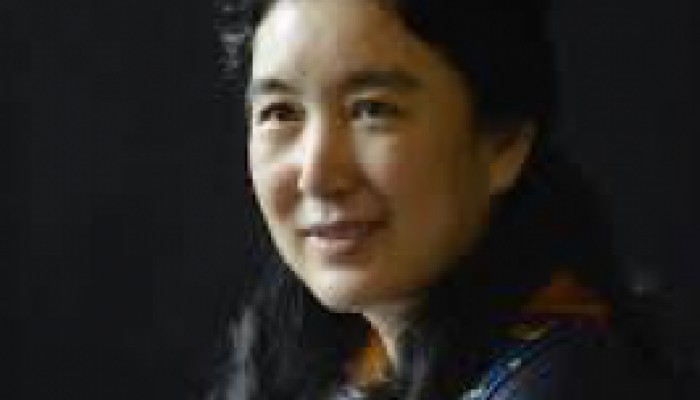
Raḥmān and Benevolence: The Universal Love and Tolerance in Chinese Islamic Tradition
- 2019-Nov-07
Benevolence is the core of Chinese traditional thought. Confucius combined the rituals and culture of the three great dynasties of Xia, Shang, and Zhou to establish the ideology of Benevolence, elevating the ritual and music culture to the spiritual culture of etiquette and righteousness, giving life to the culture of etiquette, and manifesting humanitarianism in the development of Chinese culture. Chinese Muslims have inherited the spirit of benevolence and tolerance of Chinese civilization. Islam has been peacefully introduced into China for more than 1300 years. As Chinese Islam spread and developed in other parts of the world, it also has regional, ethnic, sectarian, and ideological diversity.
Islam is mainly distributed in the Northwest, North and Southwest China. Muslims live all over the country, most of them live in the northwest. China has Xinjiang Uygur Autonomous Region and Ningxia Hui Autonomous Region, as well as some autonomous prefectures and counties about 90% of Chinese Muslims belong to Sunnis, which is basically consistent with the religious affiliation of the global Muslims community.
There are different doctrinal schools and pedagogy schools in Sunnis. From the perspective of the doctrinal school, Chinese Muslims accept the ideas of the AshAli school and the Maturidi school, some attach importance to enlightenment, some to rationality, and others to both belief and rationality. As far as the pedagogy schools are concerned, there are four pedagogy schools in traditional Sunnis: Hanafi, Shafiyi, Malik, and Hanbali.
The most influential one in China is Hanafi school. From the perspective of regional culture, the northwest, central, southwest and southeast regions have their own characteristics, which are reflected in Muslim architecture, tomb system, etiquette, and Islamic festivals, etc..
Chinese Islam is mostly represented via the population of ten ethnic minority groups including Hui and Uygur as the carrier of faith, with distinct national and regional cultural characteristics. Islamic culture, ideology, and system have been internalized into the national cultures and customs of the 10 ethnic minority groups. Muslims of all ethnic groups have successfully resolved the tension between Islam and their traditional culture, integrating and creating a new culture. In this process, Islam embraces the cultural traditions of all ethnic groups, it is also endowed with strong regional and national characteristics, which has become a crucial part of national identity.
Hui people are originally Arabs and Persians who come to China to do business, trade and preach, they were later integrated with Han, Mongolian and Uyghur people in China. Islam plays an important role in the formation and development of Hui people. The Hui has a population of more than ten million, living in the Northwest, Southwest, North and Southeast regions of China, with distinct regional characteristics.
Throughout their history, Uygur people once believed in Shamanism, Buddhism, Zoroastrianism, Taoism, Nestorianism (Christian Nestorian), Manichaeism and Islam. Today, in the areas where Uyghur people live, there are not only mosques and Mazha halls but also Buddhist temples and caves, as well as the relics of Manichaeism murals. It is a well-known mythical legend of Uygur that the goddess created Adan, the wolf tree god, and Oğuz Kağan. The Baoan ethnic group, with a total population of less than 20000, is an ethnic group formed by the Mongolians who believed in Islam in Qinghai in the 13th-16th century and then integrated with the Hui, Tibetan and Tu ethnic groups. In the Ming Dynasty, they built castles in Tongren District, Qinghai Province. During the Tongzhi period of Xianfeng in the Qing Dynasty, in order to avoid the war, Baoan Sanzhuang in Qinghai moved to Jishishan in Gansu Province to form a new Baoan Sanzhuang. A large number of Mongolian words have been preserved in Baoan's language, the Baoan people have retained the nomadic people's favorite wrestling, shooting, horse racing, and other customs. According to the myths and legends of the Baoan people, the flood once turned the beautiful Baoan mountain village into a wasteland.
Three young men survived and got married to the Hui, Mongolian, and Tibetan girls respectively, which then bred into three ethnic groups. Apart from Eid Adha Festival and Eid al-Fitr Festival, the Tajik people who believe in Shiite Ismayi, also celebrate national festivals such as the Water Diversion Festival, the Farming Festival, the Lantern Festival, and the Nowruz Festival. Qur’an, Masnavi, Dengjing, Avesta are national cultural treasures of the Tajik. 1
The benevolence of Confucianism and the “universal love” of Islam contain the spirit of fraternity and tolerance. The contemporary value of universal love and benevolence lies in: First, dealing with the predicament of life, understanding oneself, using human strength as the foundation to achieve personal value and accomplishing social undertakings. Second, rebuilding the ethics and morality, connecting the external form of the etiquette and music system or pedagogy with inner moral cultivation and behavior, choosing to push oneself and cultivating people's moral self-discipline. Third, cultivating and improving talents, benevolence, wisdom and courage, Chinese morality and heart, and creativity. Fourth, carrying forward the spirit of benevolence, abandoning cruel and extreme means of war, resolving ethnic and religious conflicts and carrying out civilized dialogues to achieve world peace and development. We all join hands to build a community of common interests and destiny. Fifth, building an ecological civilization, integrating the universe and man, and praising the nurture of nature. Human beings as Surrogate, seeking the happiness of both worlds. 2
Chinese Islam has distinct Chinese characteristics. Chinese Muslims use Oriental wisdom to understand, interpret and express their beliefs. What is Oriental wisdom? Chinese culture stresses “the unity of universe and man”, Indian culture stresses “the unity of Buddhism and man”, Islamic culture stresses “the unity of man and man”. These ideologies transcend the binary opposition between revelation and rationality, existence and thinking, subject and object;, emphasizeing tolerance, harmony and coexistence; emphasizing the complementary relationship between heaven and man, nature and society, East and West; proposing the doctrine of neutrality, rationality, tolerance; encouraging pluralism, cooperation and peace; opposing exclusiveness, extremism and fanaticism; and prohibiting segregation, confrontation and violence. It is conducive to resolving conflicts and mutual understaning amongcivilizations.
The historical experience of the harmony shared by Chinese civilization and Islamic civilization lies in: First, when integrating the two civilizations, Chinese Muslims have always maintained the unique value of Islam while acknowledging the subjectivity of Chinese culture. Through the interpretation of Confucianism, Islam is endowed with unique Chinese cultural connotation, so that Chinese Islam has a distinct Chinese characteristic. Through the interpretation of Confucianism, Chinese civilization is enriched with Islamic civilization. Islam preaches the change of the universe and the transformation of the human world with the annular world view which is congenital and revertible. Islam's ontology is related to the ideology of “Essence and Existence”, in which existence has various levels and forms, providing a new perspective for Confucian metaphysics. Second, Islamic civilization and Chinese civilization coexist harmoniously and develop together.
The relationship between Islamic civilization and Chinese civilization is harmonious, symbiotic and appreciative of each other’s quintessence. Third, resolving the ethnic, religious, and social conflicts peacefully is to create a harmonious relationship between nations, religions, and civilizations. The historical experience of the two civilizations is of great reference significance to the equal dialogue among different civilizations in the contemporary world, the peaceful settlement of regional disputes, ethnic and religious conflicts.
...................





